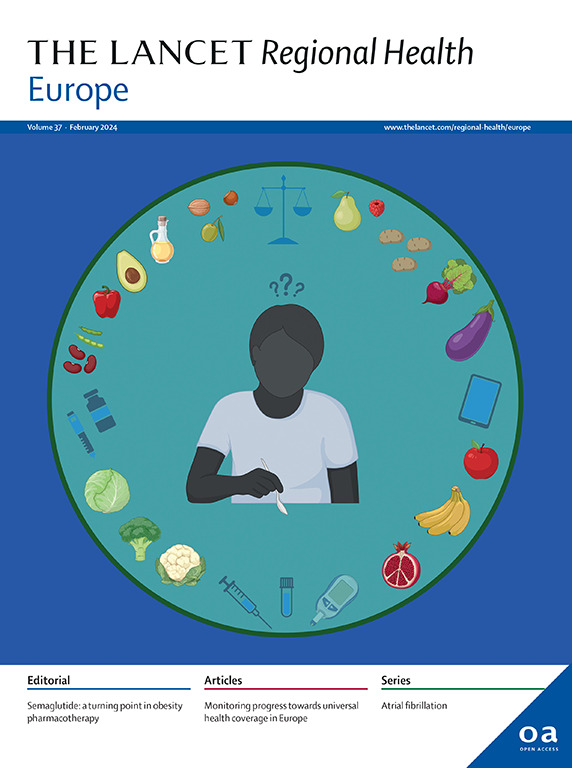The effect of disease-modifying therapies on brain volume loss and disability accumulation in multiple sclerosis: a systematic review and network meta-analysis
IF 13
Q1 HEALTH CARE SCIENCES & SERVICES
引用次数: 0
Abstract
Background
Multiple treatments have demonstrated efficacy in preventing brain volume loss (BVL) in randomized controlled trials (RCTs) for multiple sclerosis (MS). However, assessing their relative effectiveness remains challenging due to limited head-to-head comparisons. Additionally, the relationship between treatment effects on BVL and disability accumulation is not established for newer therapies. This study aimed to compare the efficacy of approved disease-modifying therapies (DMTs) in reducing BVL in MS and to investigate the association between treatment effects on BVL and disability accumulation.
Methods
In this systematic review and network meta-analysis, we included all RCTs enrolling adults with MS that evaluated FDA-approved DMTs and reported BVL outcomes over at least one year. We searched PubMed, Embase, and Cochrane from inception to September 2024. Following PRISMA guidelines, two reviewers independently extracted data on BVL, MRI lesion activity, and disability progression. We conducted a mixed-effects network meta-analysis with placebo as the reference group. Meta-regression analyses examined the association between treatment effects on BVL and disability progression, adjusting for MRI lesion activity.
The primary outcome was BVL. Secondary outcomes included MRI lesion accumulation and risk of confirmed disability progression. Effect sizes were reported as the ratio of means (ROM) and hazard ratios (HRs), with 95% confidence intervals (CIs). This study is registered with PROSPERO (CRD420251034936).
Findings
We included 33 RCTs evaluating 16 DMTs and 26,247 patients. Eight DMTs significantly reduced BVL compared to placebo, including ponesimod (ROM = 0.52; 95%-CI: 0.35–0.77), ofatumumab (ROM = 0.58; 95%-CI: 0.40–0.83), alemtuzumab (ROM = 0.63; 95%-CI: 0.49–0.83), teriflunomide (ROM = 0.71; 95%-CI: 0.52–0.97), ozanimod (ROM = 0.74; 95%-CI: 0.56–0.98), natalizumab (ROM = 0.77; 95%-CI: 0.61–0.96), siponimod (ROM = 0.77; 95%-CI: 0.60–0.98), and fingolimod (ROM = 0.83; 95%-CI: 0.71–0.96). The treatment effect on BVL was associated with the treatment effect on disability accumulation (β = 0.466; p = 0.008), and this association remained significant independently of the treatment effect on MRI activity (β = 0.422; p = 0.005).
Interpretation
Several DMTs—including newer therapies—significantly reduce BVL, and this effect correlates with reduced disability accumulation. These findings support BVL as a meaningful treatment target in MS.
Funding
None.
疾病改善疗法对多发性硬化症脑容量损失和残疾积累的影响:系统综述和网络荟萃分析
在多发性硬化症(MS)的随机对照试验(RCTs)中,多种治疗方法已经证明了预防脑容量损失(BVL)的有效性。然而,由于有限的正面比较,评估它们的相对有效性仍然具有挑战性。此外,对于较新的治疗方法,BVL的治疗效果与残疾积累之间的关系尚未建立。本研究旨在比较已批准的疾病修饰疗法(DMTs)在减少MS患者BVL方面的疗效,并探讨治疗对BVL的影响与残疾积累之间的关系。在这项系统评价和网络荟萃分析中,我们纳入了所有纳入MS成人的随机对照试验,这些试验评估了fda批准的dmt,并报告了至少一年的BVL结果。我们检索了PubMed, Embase和Cochrane从成立到2024年9月。遵循PRISMA指南,两位审稿人独立提取了BVL、MRI病变活动性和残疾进展的数据。我们以安慰剂为参照组进行了一项混合效应网络荟萃分析。meta回归分析检验了治疗效果对BVL和残疾进展之间的关系,调整了MRI病变活动。主要终点为BVL。次要结果包括MRI病变积累和确认残疾进展的风险。效应量报告为均值比(ROM)和风险比(hr), 95%置信区间(ci)。本研究已在PROSPERO注册(CRD420251034936)。我们纳入了33项随机对照试验,评估了16例dmt和26247例患者。与安慰剂相比,8种dmt显著降低BVL,包括ponesimod (ROM = 0.52; 95%-CI: 0.35-0.77)、ofatumumab (ROM = 0.58; 95%-CI: 0.40-0.83)、阿仑妥珠单抗(ROM = 0.63; 95%-CI: 0.49-0.83)、teriflunomide (ROM = 0.71; 95%-CI: 0.52 - 0.97)、ozanimod (ROM = 0.74; 95%-CI: 0.56-0.98)、natalizumab (ROM = 0.77; 95%-CI: 0.61-0.96)、siponimod (ROM = 0.77; 95%-CI: 0.60-0.98)和fingolimod (ROM = 0.83; 95%-CI: 0.71 - 0.96)。BVL的治疗效果与残疾积累的治疗效果相关(β = 0.466; p = 0.008),并且这种相关性独立于MRI活性的治疗效果(β = 0.422; p = 0.005)仍然显著。几种dmt(包括较新的治疗方法)可显著降低BVL,这种效果与减少残疾积累相关。这些发现支持BVL作为MS.FundingNone有意义的治疗靶点。
本文章由计算机程序翻译,如有差异,请以英文原文为准。
求助全文
约1分钟内获得全文
求助全文
来源期刊

Lancet Regional Health-Europe
Multiple-
CiteScore
19.90
自引率
1.40%
发文量
260
审稿时长
9 weeks
期刊介绍:
The Lancet Regional Health – Europe, a gold open access journal, is part of The Lancet's global effort to promote healthcare quality and accessibility worldwide. It focuses on advancing clinical practice and health policy in the European region to enhance health outcomes. The journal publishes high-quality original research advocating changes in clinical practice and health policy. It also includes reviews, commentaries, and opinion pieces on regional health topics, such as infection and disease prevention, healthy aging, and reducing health disparities.
 求助内容:
求助内容: 应助结果提醒方式:
应助结果提醒方式:


